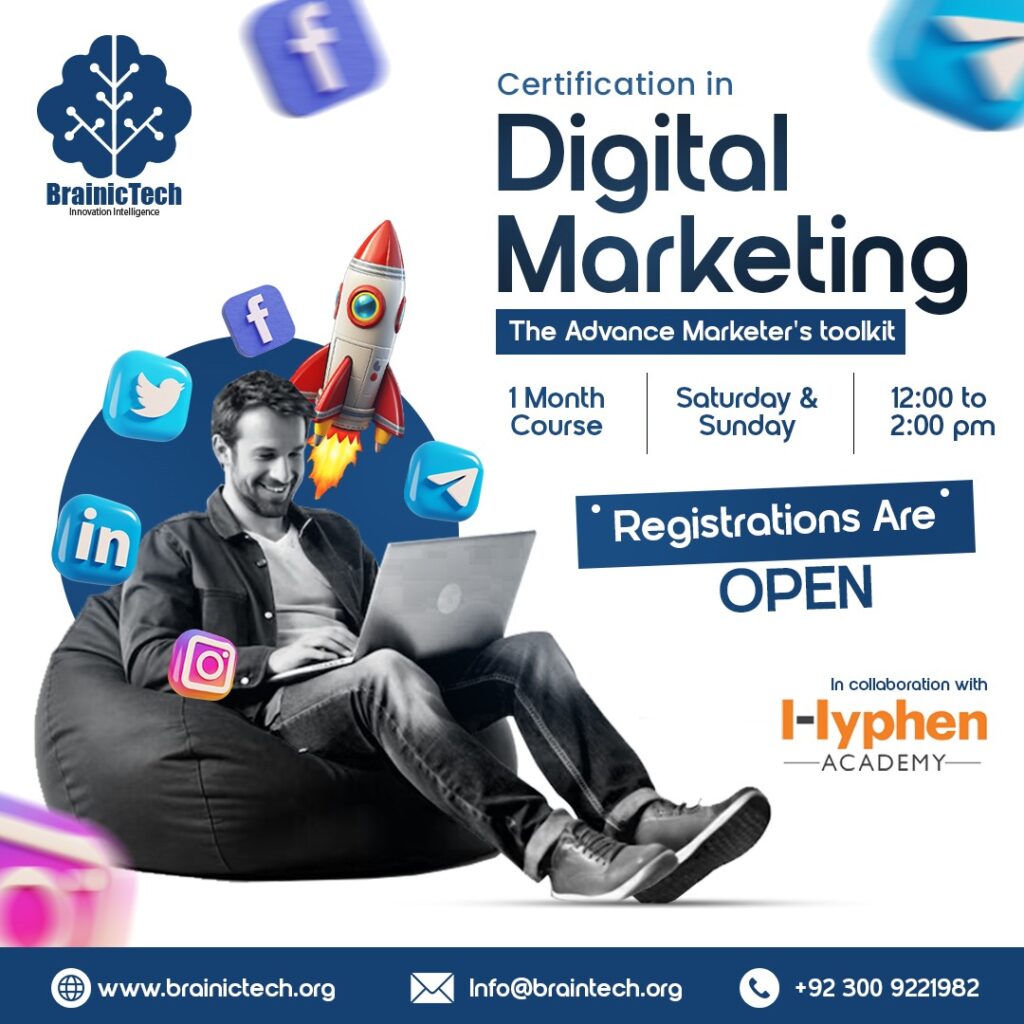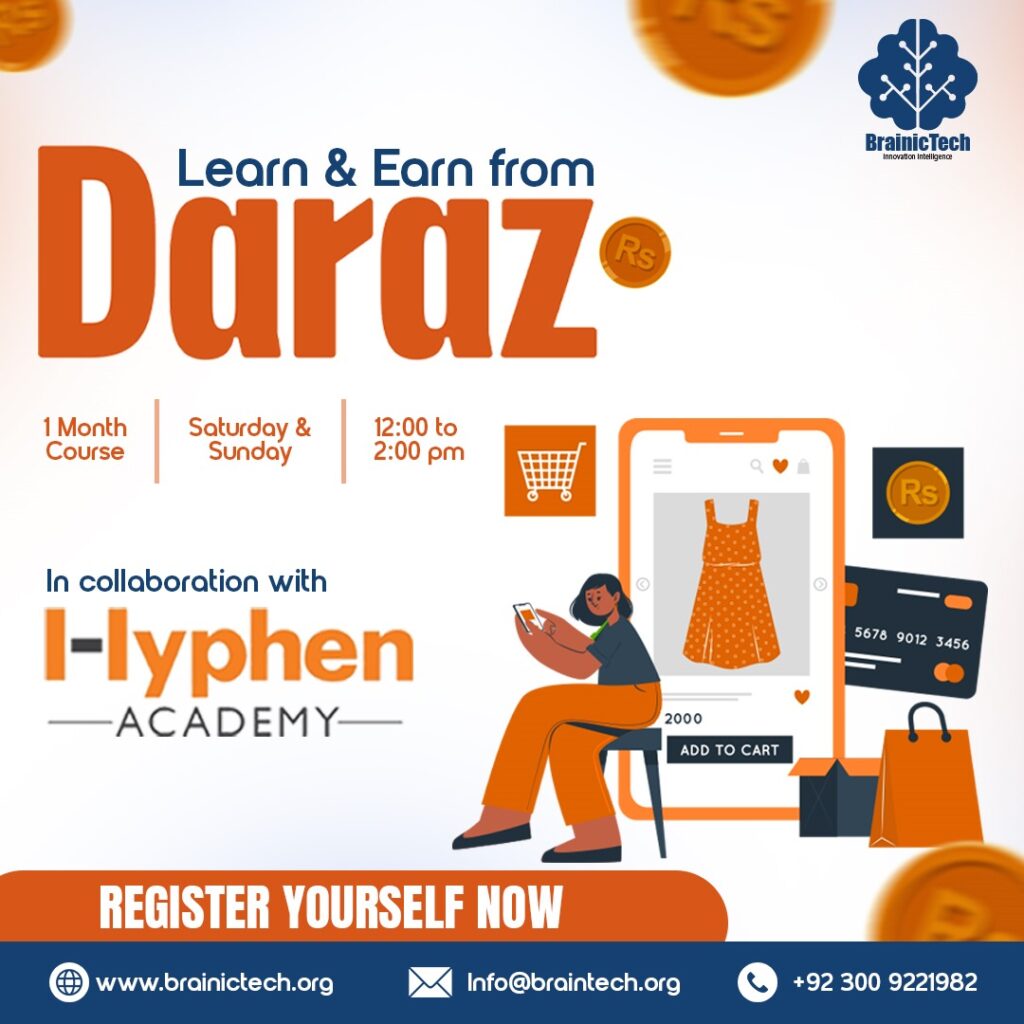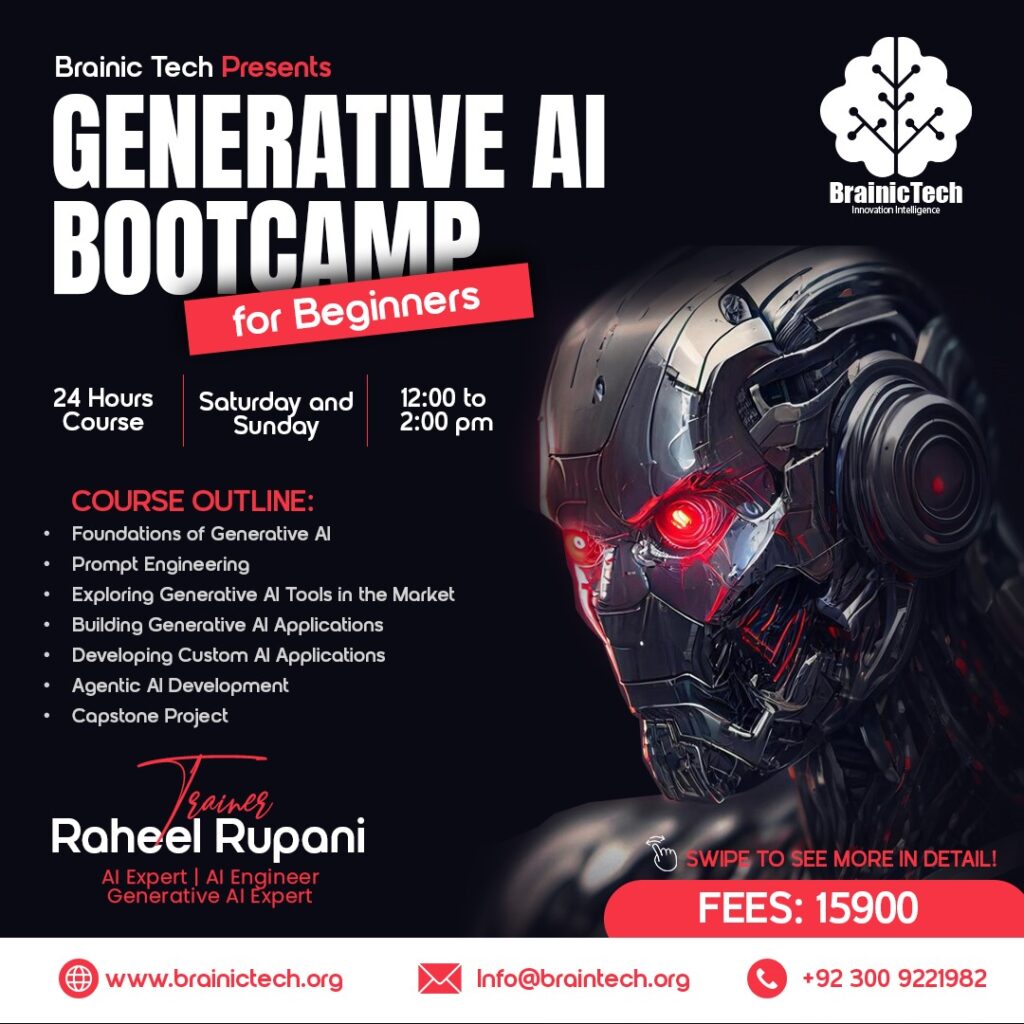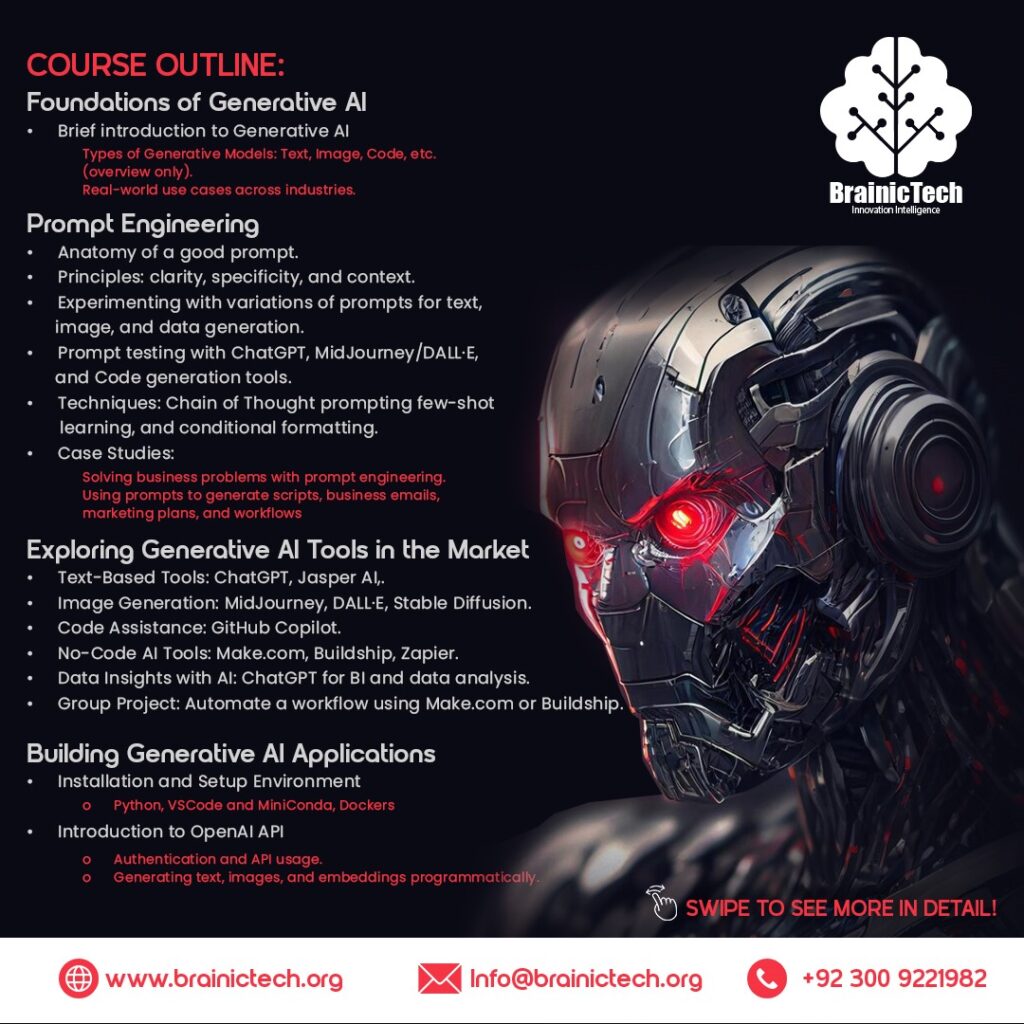Generative AI BootCamp for Beginners
Home
Digital marketing – The advance Marketer’s toolkit

- 1 Month
- Certificate
- Introduction of Facebook Ads
- How To Set Up a Business Manager Account
- How To SetUp a Pixel
- How To Create Events

- 1 Month
- Certificate
- Building a Business on Daraz
- Account Creation
- Product Hunting
- Sourcing

Course Outline
Foundations of Generative AI
- Brief introduction to Generative AI
- Types of Generative Models: Text, Image, Code, etc. (overview only).
- Real-world use cases across industries.
Prompt Engineering
- Anatomy of a good prompt.
- Principles: clarity, specificity, and context.
- Experimenting with variations of prompts for text, image, and data generation.
- Prompt testing with ChatGPT, MidJourney/DALL·E, and Code generation tools.
- Techniques: Chain of Thought prompting few-shot learning, and conditional formatting.
- Case Studies:
- Solving business problems with prompt engineering.
- Using prompts to generate scripts, business emails, marketing plans, and workflows.

Exploring Generative AI Tools in the Market
- Text-Based Tools: ChatGPT, Jasper AI,.
- Image Generation: MidJourney, DALL·E, Stable Diffusion.
- Code Assistance: GitHub Copilot.
- No-Code AI Tools: Make.com, Buildship, Zapier.
- Data Insights with AI: ChatGPT for BI and data analysis.
- Group Project: Automate a workflow using Make.com or Buildship.
Building Generative AI Applications
- Installation and Setup Environment
- Python, VSCode and MiniConda, Dockers
- Introduction to OpenAI API
- Authentication and API usage.
- Generating text, images, and embeddings programmatically.
- Developing Custom AI Applications:
- Chatbots and Conversational AI.
- Integrating Generative AI with existing applications.
- Practical Projects:
- Create a customer support chatbot.
- Build a financial summarization tool (text-to-insights for finance reports).
Agentic AI Development
- Understanding Agentic AI:
- Agents, actions, and tools.
- Difference between rule-based automation and autonomous agents.
- Tools for Building Agents:
- LangChain: Chains of LLMs for specific goals.
- Python for Gen AI
- Real-World Applications:
- Autonomous financial analysts.
- Automated content creators.
- Agent-driven data extraction and summarization.
- Group Project: Build an Agentic AI tool (e.g., automated report generator, workflow manager).
- Capstone Project:
- Students choose a business use case to solve using Generative AI.
- Teams create end-to-end solutions involving:
- Prompt engineering.
- Tool integrations.
- Custom application development.
- Deliverables:
- Functional prototype.
- Demo and presentation.
